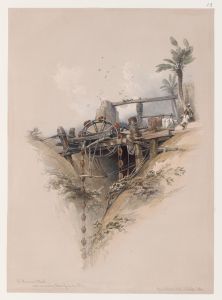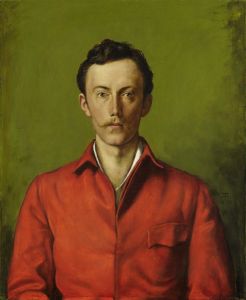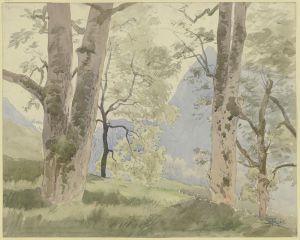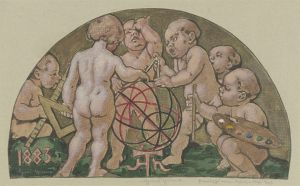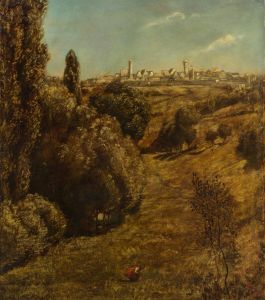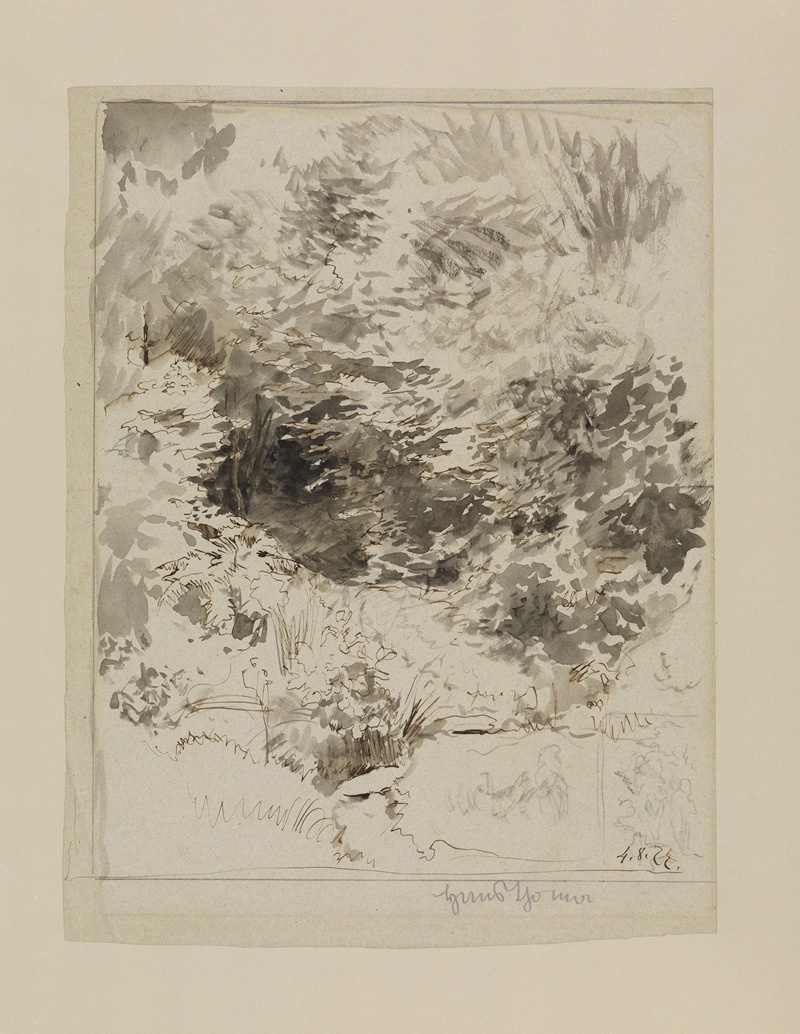
Dichtes Buschwerk an einer Quelle
A hand-painted replica of Hans Thoma’s masterpiece Dichtes Buschwerk an einer Quelle, meticulously crafted by professional artists to capture the true essence of the original. Each piece is created with museum-quality canvas and rare mineral pigments, carefully painted by experienced artists with delicate brushstrokes and rich, layered colors to perfectly recreate the texture of the original artwork. Unlike machine-printed reproductions, this hand-painted version brings the painting to life, infused with the artist’s emotions and skill in every stroke. Whether for personal collection or home decoration, it instantly elevates the artistic atmosphere of any space.
Hans Thoma's painting Dichtes Buschwerk an einer Quelle (translated as Dense Shrubbery at a Spring) is a work by the German artist, who is renowned for his contributions to 19th-century landscape and genre painting. Thoma, born on October 2, 1839, in Bernau in the Black Forest region, often drew inspiration from the natural surroundings of his homeland. His works frequently reflect a deep connection to nature, characterized by detailed depictions of landscapes, forests, and rural scenes.
This particular painting, Dichtes Buschwerk an einer Quelle, exemplifies Thoma's skill in portraying the natural world with precision and sensitivity. The artwork depicts a dense thicket of vegetation surrounding a spring, capturing the lush greenery and tranquil atmosphere of the scene. Thoma's use of light and shadow enhances the texture and depth of the foliage, creating a vivid and immersive representation of the natural environment. The painting reflects the influence of the Romantic and Realist movements, which were prominent during Thoma's career, blending an idealized view of nature with meticulous attention to detail.
Hans Thoma's artistic style was shaped by his training and experiences. He studied at the Karlsruhe Academy of Fine Arts and later worked in Düsseldorf, Paris, and Munich, where he encountered various artistic trends and movements. Thoma was particularly influenced by the works of the German Romantic painter Caspar David Friedrich and the French Realist Gustave Courbet. These influences are evident in his approach to landscape painting, which combines emotional resonance with a commitment to realism.
While Thoma's work was not widely recognized during the early stages of his career, he gained greater appreciation later in life. By the late 19th and early 20th centuries, he was celebrated as one of Germany's leading painters, and his works were exhibited in major galleries and collections. Today, his paintings are held in various museums, including the Staatliche Kunsthalle Karlsruhe and the Städel Museum in Frankfurt.
Specific details about the creation date or provenance of Dichtes Buschwerk an einer Quelle are not readily available in existing records. However, the painting is consistent with Thoma's broader body of work, which often focused on serene and idyllic representations of nature. As with many of his landscapes, this piece likely reflects his personal connection to the Black Forest and his broader interest in capturing the beauty of the natural world.








